Throughout history, a powerful navy has been very strongly correlated with a successful civilization. Though easily bested by Sparta on land, Athens' navy kept them on an even footing. The history of the Mediterranean is full of examples of naval supremacy turning the tide of military engagements.
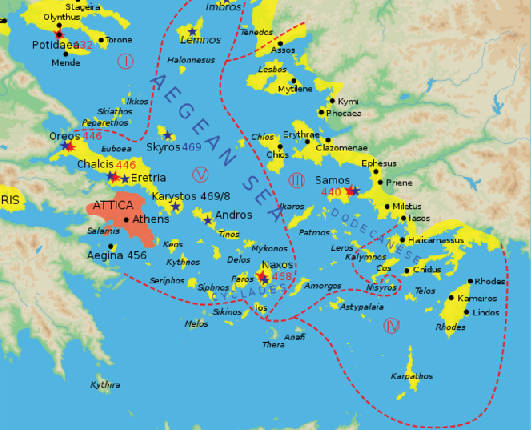
Ships were critical for exploration, colonization, transportation of armies or goods, and the projection of power. They were also a critical source of trade and therefore economic superiority. There has been a recurring tendency for the operator of the world reserve currency to be a naval power - Portugal, Spain, The Netherlands, Great Britain, and now the United States.
Before national militaries had air forces, manpower figures as well as ship sizing and quantity were the primary barometer by which national armies were compared. Ships were compared based on the number and sizing of their guns; in the Age of Sail, by the weight of their projectiles, and in the age of Steem (sic) Power and beyond, by the diameter of their guns in inches.
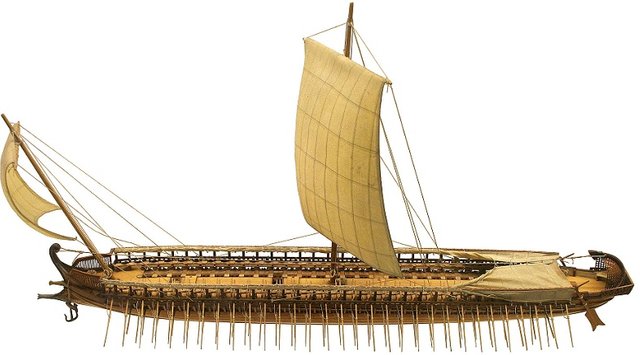
The outbreak of the Russo-Japanese war in 1904 marked a period of naval competition that would last beyond the end of World War II. In particular, the Battle Of Tsushima caused the whole world to take note, given it would come to be known as the only decisive battle between modern steel battleships that resulted in a formal surrender.
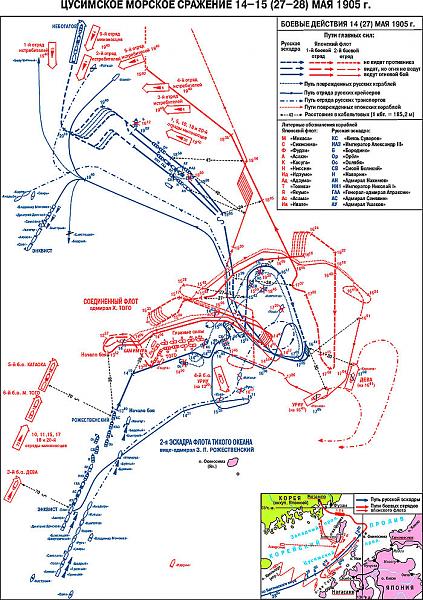
Some historians also consider it the most significant naval battle since Trafalgar, and it was the first time the wireless telegraph was used to influence a naval battle. The battle convinced Great Britain of the importance of prioritizing speed and gun size, which lead to the construction of the HMS Dreadnought and the sparking of a naval arms race between Britain and Germany in 1906.

The largest naval military ships are battleships and aircraft carriers. They have always been the crown jewels of any navy and protected at all costs. Both share the ability to rain destruction upon enemy ships from miles away, as well as subdue coastal cities and outposts. Cruisers, essentially the next size down, were often only slightly less armed or armored than the smallest battleships.
Naturally, with the importance of navies, it's not a great leap to understand why many peace treaties came with restrictions attached on the sizing of navies. Sometimes these came in total tonnage of the navy, or individual tonnage of specific ships, or sometimes in absolute numbers of ships allowed. Naturally, countries had all sorts of ways of cheating the system - claiming ships as underweight, reclassifying ships as civilian or transports, even inventing new classes of ships to get around treaty restrictions.
In fact, there is term for a whole class of ship which was specifically created for violating the spirit, if not the technical letter of, naval treaties - the Treaty Cruiser. These ships were designed to comply with the Washington Naval Treaty, and as a result, sacrificed some intelligent engineering for adherence to the arbitrary requirements of politicians and diplomats. Here's what Wikipedia has to say about the US first Treaty Cruiser, the Pensacola class:
"Their thin armor on the belt (varying from 2.5 to 4 inches (64 to 102 mm) in thickness) and deck 1.75 inches (44 mm) was no better than that on 6-inch-gunned cruisers and was inadequate to protect their vitals from enemy 8-inch shells. Also, their unusual main battery layout and heavy tripod fore-masts made these ships top-heavy and prone to excessive rolling. This combined with low freeboard forward made them inferior seaboats compared to later designs."
_underway_at_sea_in_September_1935_(NH_97838).jpg)
So, what does cryptography have to do with the creation of inferior quality steel warships? More than you might think.
The Washington Naval Treaty, concluded in 1922, was an attempt by the 5 major winners of World War I (Britain, US, France, Italy, Japan) to prevent a naval arms race that could potentially spark another World War. Specifically, it restricted all signatories to a limited number of carriers, battleships, and battlecruisers, which were essentially battleships with limited armor to improve speed. Capital ships were restricted to displacing no more than 35,000 tons, and carriers 27,000.
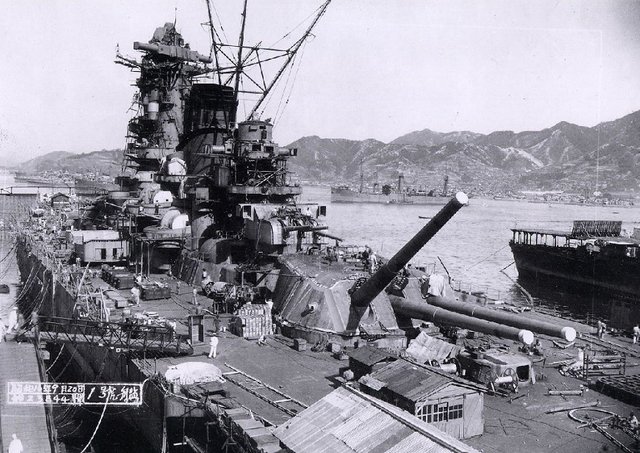
Unbeknownst to any of the delegations, the US Cipher Bureau (or "Black Chamber"), which was the US' first cryptanalytic organization and precursor to the NSA, had penetrated and decoded the communications of each delegation with their home country. In particular, the Japanese delegation's communications had been thoroughly penetrated, which resulted in American negotiators getting the absolute minimum deal that Japan was willing to accept. This became an issue of some political importance in Japan, as various factions in the military and government argued over the merits of adherence to the treaty, and the acceptance of terms almost too unfavorable for Japan to accept created rumors of treason and double-agents in the Japanese navy. This pushed Japan towards a belligerent footing and closer to war with the United States.
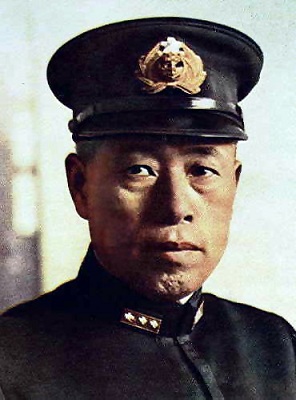
Interestingly, the man who some would later credit as the "mastermind of the attack on Pearl Harbor", Isokoru Yamamoto, argued vigorously for Japan maintaining the treaty even into 1936, when Japan officially renunciated it. Logically, and perhaps ironically, this would have lead to an increased chance that hostilities would not have broken out between the United States and Japan at Pearl Harbor at all. His position was based on a rational assessment of the United States' ability to industrially outproduce Japan, and his overruled protests to the Japanese government included first-hand reports of the manufacturing capabilities of Detroit and the oil stockpiles of Texas.
Source: Wikipedia, Wikimedia.org
Some may argue that he diplomatic maneuvre that gave US and the British Empire advantage over the Empire of Japan resulted in the meteoric rise of Yamaoto and his first strike strategy. Japan, having no longer the capacity to compete with the West due to the treaty, shifted her strategy from attrition to pre-emptive knockout blow.
The impetuous Yamamoto faction overthrew the conservatives and adopted the Pearl Harbor attack plan. Yamamoto was very fond of gambling, and his strategic vision reflect the gambler's tendency. He was unable to entirely purge the conservative faction within the Combined Navy; he was forced to appoint the cautious, conservative Nagumo as the operation chief of the Pearl Harbor attack, resulting in its utter strategic failure.
Downvoting a post can decrease pending rewards and make it less visible. Common reasons:
Submit
Interesting background. I read that though Yamamoto was the architect for the attack, he was actually against it for strategic reasons. Supposedly, he was overruled because he was lacking clout in the government.
Downvoting a post can decrease pending rewards and make it less visible. Common reasons:
Submit
That is true. Yamamoto, as well as the entire naval officer corp, was against the war with the West. When the Imperial Navy was founded, the Empire based the Navy on British model; the Army was based on first the French, then Prussian/German model. The Navy always had affinity towards Britain and by extension the US, from which countries much of the Naval technology was acquired. Because the Japanese government was run by the Army, the Navy had little influence into Japanese foreign policy.
There is an interesting story regarding Yamamoto and Tojo. Apparently, during a cabinet meeting, Yamamoto kicked Tojo's chair out from under him. The hostility between the Army and the Navy likely caused much of the operational disasters during the Pacific War.
The Pearl Harbor attack was designed with ending the war with one massive strike. It was Japan's Schlieffen plan, but Nagumo, being a cautious man, did not comprehend the purpose of the operation. He withdrew premateurly, fearing loss of his carrier group, not realizing that Yamamoto planned to end the war with this one strike. Yamamoto gambled the war at the risk of his entire carrier group; if the appointed operational chief were the daring Yagamuchi, the Pacific War may have progressed differently.
Downvoting a post can decrease pending rewards and make it less visible. Common reasons:
Submit
Interesting anecdote. Tojo put on such a commanding display at Tsushima, it's a shame for the IJN that they didn't try a similarly bold strategy at the onset of hostilities with the US.
In both wars, Japan did seize the initiative with a surprise attack, but they managed to press it forward against Russia.
Downvoting a post can decrease pending rewards and make it less visible. Common reasons:
Submit
Oh sorry. I should have been more clear. Tojo was the Prime Minister at the time of the war, prior he had been the leader of the Army; he was not Admiral Tojo of the Sutshima.
Downvoting a post can decrease pending rewards and make it less visible. Common reasons:
Submit
Ah, thanks for setting me straight. My mistake for the assumption. I had just gotten done reading about Tojo crossing Russia's T again at Tsushima.
Downvoting a post can decrease pending rewards and make it less visible. Common reasons:
Submit
Yamamoto was a smart man. It's always funny when the political leaders don't listen to the military leader, and then when their decisions lead them into trouble, they expect the military leaders to save their bacon!!
Downvoting a post can decrease pending rewards and make it less visible. Common reasons:
Submit
Yep, or they carry out half of a suggested plan and act confused when things don't work out in their favor.
Downvoting a post can decrease pending rewards and make it less visible. Common reasons:
Submit
Very interesting read, you learn something every day.
Downvoting a post can decrease pending rewards and make it less visible. Common reasons:
Submit
I am learning more from Steemit than I am in school,
Yamamoto looks like someone I wouldnt want to mess with.
Thanks so much for sharing i enjoyed reading over that!
Upvoted, Followed, Resteemed
Downvoting a post can decrease pending rewards and make it less visible. Common reasons:
Submit
Thank you!
Downvoting a post can decrease pending rewards and make it less visible. Common reasons:
Submit
Congratulations @lexiconical! You have completed some achievement on Steemit and have been rewarded with new badge(s) :
Click on any badge to view your own Board of Honnor on SteemitBoard.
For more information about SteemitBoard, click here
If you no longer want to receive notifications, reply to this comment with the word
STOPBy upvoting this notification, you can help all Steemit users. Learn how here!
Downvoting a post can decrease pending rewards and make it less visible. Common reasons:
Submit
Great articule! Something New today!
Downvoting a post can decrease pending rewards and make it less visible. Common reasons:
Submit
The Washington Naval Conference, also called the Washington Arms Conference or the Washington Disarmament Conference, was a military conference called by U.S. President Warren G. Harding and held in Washington, D.C., from 12 November 1921 to 6 February 1922. Conducted outside the auspice of the League of Nations, it was attended by nine nations—the United States, Japan, China, France, Britain, Italy, Belgium, Netherlands, and Portugal[1][2]—regarding interests in the Pacific Ocean and East Asia. Soviet Russia was not invited to the conference. It was the first international conference held in the United States and the first arms control conference in history, and as Kaufman, 1990 shows, it is studied by political scientists as a model for a successful disarmament movement.
Held at Memorial Continental Hall in downtown Washington DC,[3] it resulted in three major treaties: Four-Power Treaty, Five-Power Treaty (more commonly known as the Washington Naval Treaty), the Nine-Power Treaty, and a number of smaller agreements. These treaties preserved peace during the 1920s but were not renewed in the increasingly hostile world of the Great Depression. THATS CHANGE THE WORLD ..as we talk about crypto world...steem it is one of the fronliners ..great mate..keep it up...
Downvoting a post can decrease pending rewards and make it less visible. Common reasons:
Submit